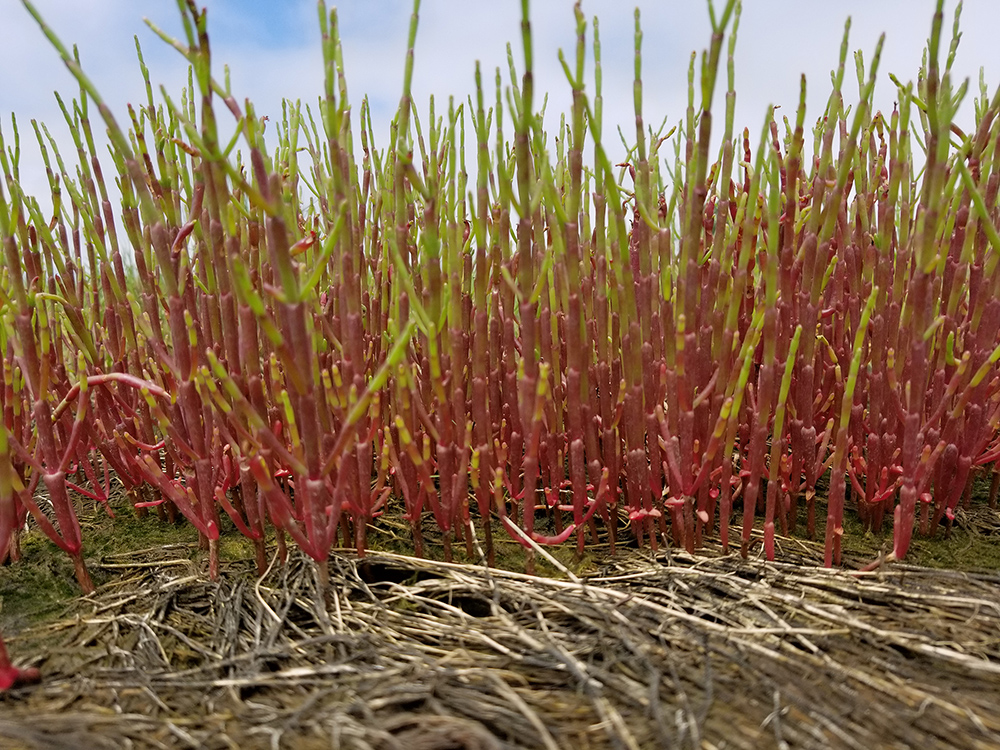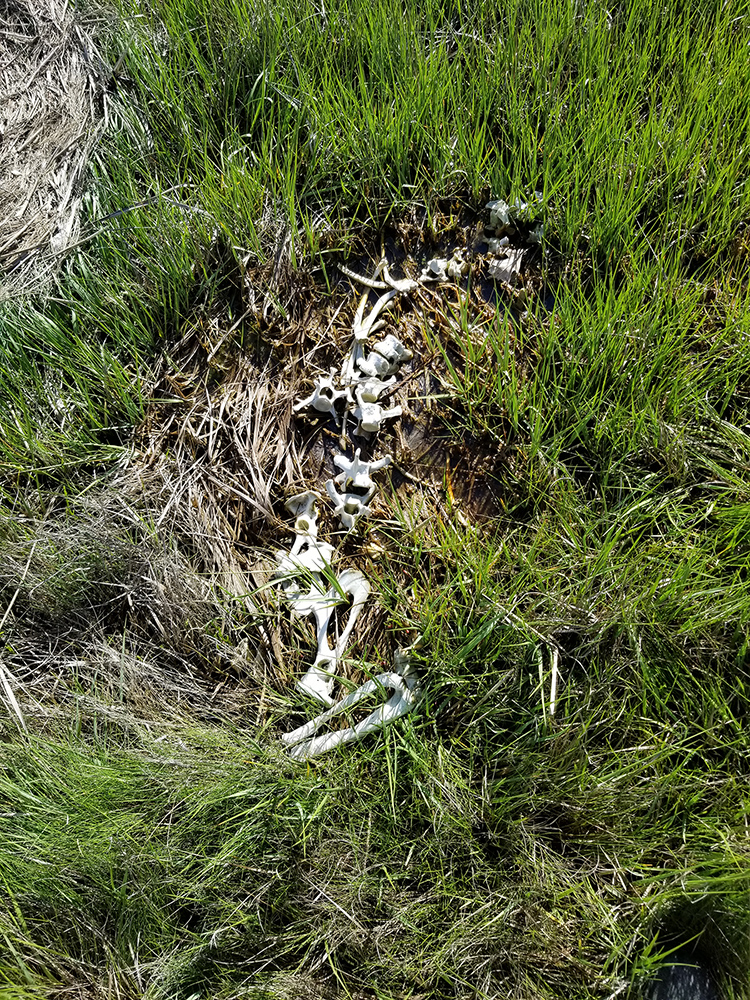Salt marshes are weird. They’re not quite land, and they’re not quite sea. Most people wouldn’t recognize one if they saw it. But they might play a key role in the survival of cities like Boston. They act as a buffer zone between civilization and the open ocean.
 I’ve lived my whole life in Massachusetts and hadn’t stepped foot into a saltmarsh until I was 20 years old; now I’m a second-year field tech for the Byrnes lab studying how salt marshes are changing over time. I consider myself very acquainted with the marsh, however cruel she might be sometimes, but I am in awe of the fact that time feels different in the marsh. When I return every morning, it seems the same. The grass is still growing, the creek is still running, the birds are still chirping, but most noticeably, the bugs are still biting. A seal skeleton I found fresh in 2018 is still perfectly aligned when I came back in 2019. Very constant. It’s as if the marsh simply doesn’t change.
I’ve lived my whole life in Massachusetts and hadn’t stepped foot into a saltmarsh until I was 20 years old; now I’m a second-year field tech for the Byrnes lab studying how salt marshes are changing over time. I consider myself very acquainted with the marsh, however cruel she might be sometimes, but I am in awe of the fact that time feels different in the marsh. When I return every morning, it seems the same. The grass is still growing, the creek is still running, the birds are still chirping, but most noticeably, the bugs are still biting. A seal skeleton I found fresh in 2018 is still perfectly aligned when I came back in 2019. Very constant. It’s as if the marsh simply doesn’t change.
 Now think of returning to the marsh after a year away. The creeks are getting wider as they erode more marsh. The species of grass are changing, signifying a slightly lower elevation. Even all the first holes you fell into are now growing bigger, as if they’re chasing you. This, unfortunately, is called marsh degradation and it happens at a rate that can oftentimes be difficult to detect.
Now think of returning to the marsh after a year away. The creeks are getting wider as they erode more marsh. The species of grass are changing, signifying a slightly lower elevation. Even all the first holes you fell into are now growing bigger, as if they’re chasing you. This, unfortunately, is called marsh degradation and it happens at a rate that can oftentimes be difficult to detect.
Salt marshes can feel like a bridge between worlds, maybe even like a world that plays by its own rules, and it needs our help. Only by observing this ecosystem for extended periods of time can we understand how we can reap all the benefits.
– Richard Wong (Field Technician, Byrnes Lab of UMass Boston)
Leave a Reply